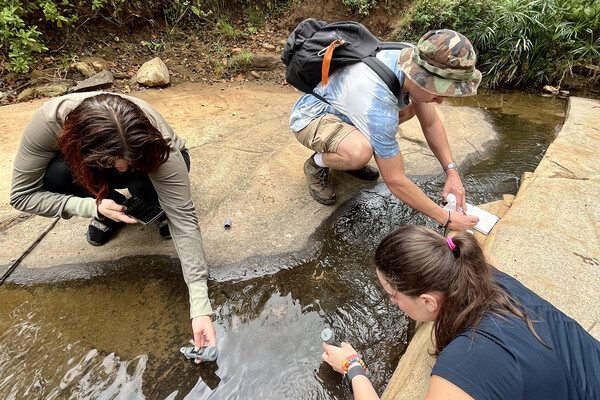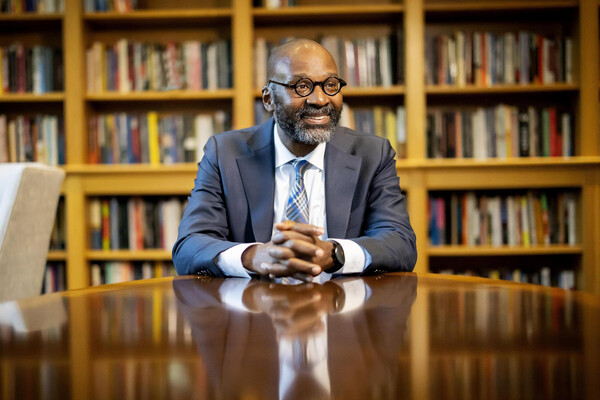
Griffin Pitt, right, works with two other student researchers to test the conductivity, total dissolved solids, salinity, and temperature of water below a sand dam in Kenya.
(Image: Courtesy of Griffin Pitt)

For Tamir Williams, art is a family affair.
Their grandmother was an artist, whose talents spilled over to their father. As a kid growing up in Chicago, Williams’ father taught all his children how to draw. Throughout their high school years, Williams enrolled in after-school art programs. Through the years, Williams’ curiosity expanded, exploring printmaking, acrylic painting, charcoal drawing, and more.
But it wasn’t until they were a student at Middlebury College that they took their first art history course and developed an interest in curating. Their studies in Black art history and criticism, specifically, initially arose from reading bell hooks’s “Art on My Mind” and from reading Gwendolyn Dubois Shaw’s “Seeing the Unspeakable,” about contemporary African American painter Kara Walker. Shaw is currently their adviser as a Ph.D. candidate in the School of Arts & Sciences’ History of Art Department Ph.D. program. Williams specializes in American art and contemporary art.
Through a 2020 grant from The Sachs Program for Arts Innovation, Williams was able to curate eight photographs that are on display at The AUTOMAT gallery at 1400 N American St. in North Philadelphia through July 8. The images were taken by Michael Abramson, a Wharton alumnus who later attained his MS in photography from the Illinois Institute of Technology in Chicago. For a thesis project, he photographed Black nightclubs on the south side of Chicago from December 1974 to May 1977.
Williams’ exhibit is titled “A Space to Appear, a Space to Tarry” and features photographs taken at the nightclub Pepper’s Hideout—which, through its name and the presence of mirrors, prompts questions of visibility.
“I was interested in the significance of the place being called Pepper’s Hideout and what types of visibility were happening in the space whose name promised concealment,” Williams says. “It became a space for these Black clubgoers to have control over their visibility and to allow their appearances to linger a bit longer than what is allowed outside of this space they’ve created.”
Williams was initially struck by the presence of the mirrors in the nightclubs that Abramson documented.
“I wondered what the mirrors in the club did to the visibility practices and politics in the space, both for the clubgoers and also for Abramson who entered the space,” Williams says.
The exhibit also indirectly calls attention to the music history behind the photographs, specifically the heyday disco era these clubgoers existed in. Williams connects the visibility practices the clubgoers created and lived in to the events that would take place at Comiskey Park in Chicago in July of 1979—a mass burning and explosion of disco records that’s known as Disco Demolition Night.
Williams hopes Black visitors will “feel like their histories are being displayed and are able to have conversations around it and be seen.”
In the future, Williams hopes to display more of Abramson’s work on Penn’s campus. They’ll also host a curator’s talk on Friday, July 7, for the closing of the exhibition at The AUTOMAT.

Griffin Pitt, right, works with two other student researchers to test the conductivity, total dissolved solids, salinity, and temperature of water below a sand dam in Kenya.
(Image: Courtesy of Griffin Pitt)

Image: Andriy Onufriyenko via Getty Images

nocred

Provost John L. Jackson Jr.
nocred